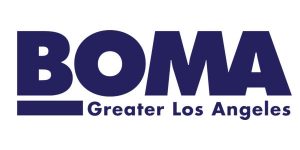
Methamphetamine lab cleanup is unfortunately a growing problem, not just for the Bureau of Narcotics and law enforcement, but for the Department of Health and those occupying a property that has been used as a lab.
Clandestine drug labs can be, and are, set up just about anywhere — including seemingly normal suburban houses, apartments, and even motel rooms. The US DEA reported 11,210 labs in 2012. They may remain undetected for months or years, or even come and go without anyone noticing anything unusual.
The chemicals used as well as the meth itself pose major hazards. The “cooks” wear gas masks, and contamination of the building and furnishings can reach such high levels that exposure can soon lead to lung damage or even death. So meth lab cleanup can be a very dangerous series of tasks.
The Contamination
When a property has been used to cook meth a whole host of hazardous materials may be left behind. And most likely many will have filled the air and soaked into the building, furniture, and other materials so has to pose an environmental health hazard. While in use, and afterwards, meth labs can be highly flammable. The many chemicals used to make methamphetamine and other illegal drugs include volatile solvents such as paint thinner and acetone, various acids, phosphorous, and more. There may also be propane tanks used for heating.
You may have purchased or be renting a contaminated property used as a drug lab and not even know it. You can be affected by direct contact or simply breathing in contaminates. Symptoms include breathing problems, coughing, dizziness, and nausea as well as skin and eye irritations. Only formal testing can determine if a prior methamphetamine lab is the cause.
Clean Up Tasks
Unless testing shows very low levels of contamination you shouldn’t attempt meth lab cleanup yourself. As just one example of the risks many cleaning products (including bleach) chemically react, adding even more toxic compounds.
There are no official regulations but our methamphetamine lab cleanup team carefully follows all EPA cleanup guidance along with California state procedures. Here’s an outline of our typical scenario after local law enforcement clears the building and hazmat teams have taken care of gross chemical removal.
- Take test samples from all rooms as well as outdoors (where wastes are sometimes dumped).
- Air out the property for at least 24 hours and use HEPA air scrubbers after that.
- Remediation by specially trained technicians wearing personal protective equipment.
- Removal of any remaining lab equipment, paraphernalia, and other materials.
- Removal of furniture and other non-salvageable items.
- Remove carpet then HEPA vacuum cobwebs, walls, and underlying floors.
- Give walls and hard surfaces a preliminary washing.
- Clean and seal the HVAC system.
- Repeatedly wash and rinse all surfaces.
- It may be necessary to prime or encapsulate walls, ceilings, and/or floors.
- Since hazardous wastes may be dumped down water systems, thoroughly flush all drains, traps, and toilets.
- Properly dispose of all hazardous wastes.
- Take samples for testing and a clearance to re-occupy.
That’s a lot of work requiring a great deal of technical expertise, but it’s what’s necessary to assure everyone’s health and safety.









